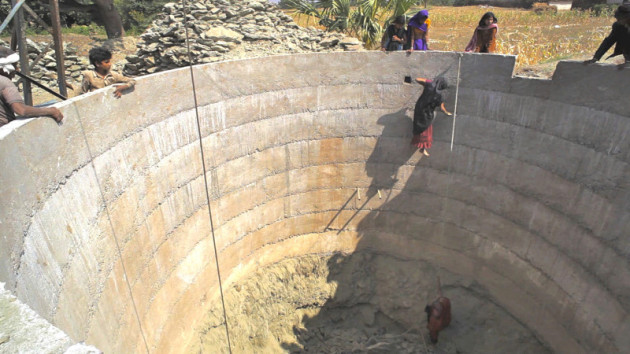The model employed by us through ASA is one of a joint relationship with the farmer. It is crucially important that he and his family see it as very much their project, and we cannot over-stress how much effort they have to contribute.
Once they have signed up to the programme, the farmer and his family have to dig the first 3 metres themselves. Given that this will be an area of 5-7 metres in diameter, this is not a small undertaking, and could take seven or eight people up to six weeks. Each well will feed between 2 and 4 adjacent smallholdings, and the work binds the neighbouring farmers in a joint objective.
The whole process will take several months, but once the well is functioning, the pride in their achievement is palpable, and they can look forward to a much more secure livelihood.
Once the initial hole has been dug, the first instalment of the funding from Where There’s a Well comes in to help pay for the next stage, perhaps because blasting equipment is needed to get through a rock layer, perhaps for extra labour to help with the soil clearance or the hiring of machinery.
The well may have to be anything from 40 to 60 feet deep, and once the water table has been reached, the well has to be made good with a retaining wall at the top to prevent slippage, and pumps and piping bought.



